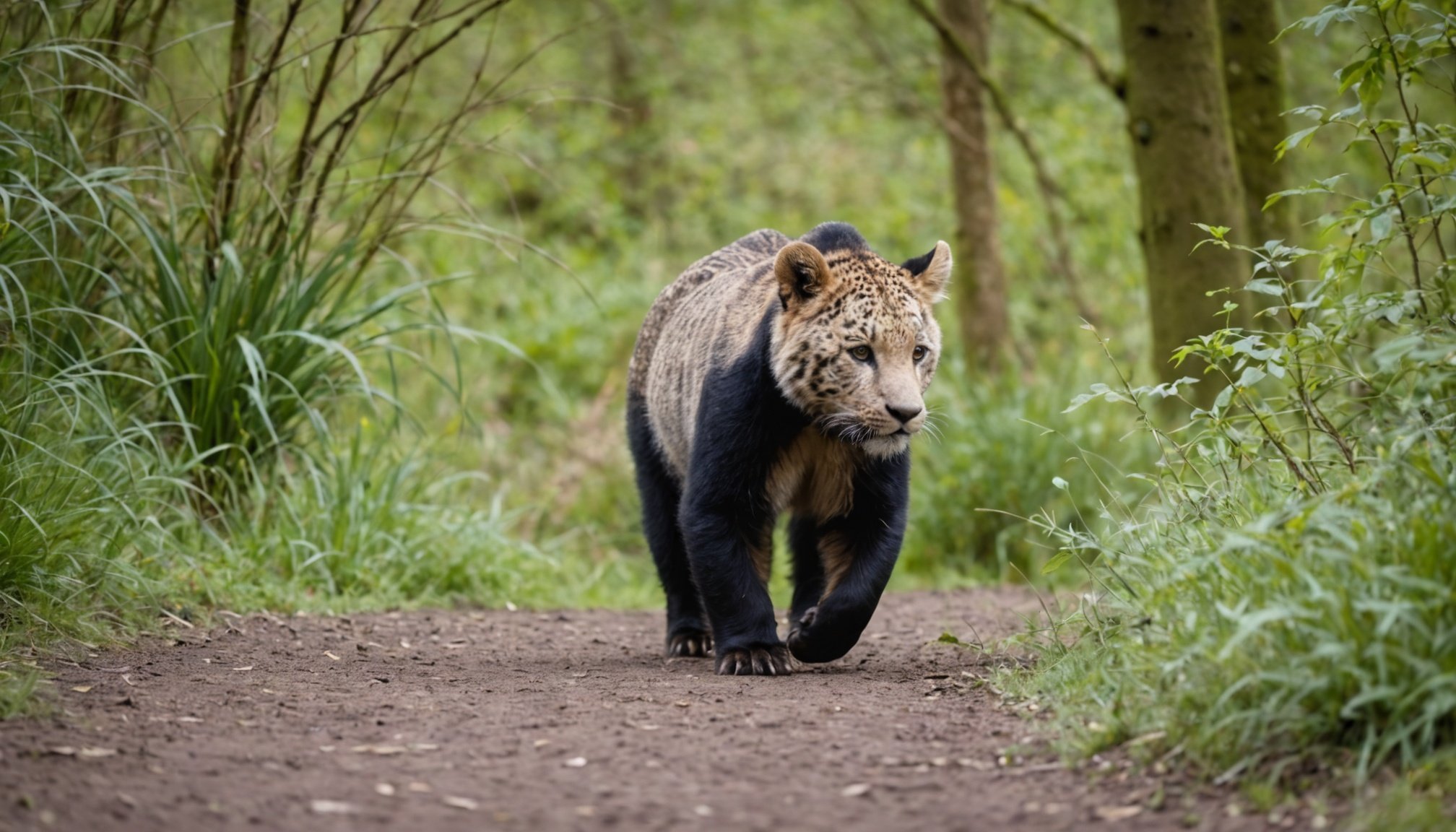Introduction to Animal Escape Prevention
Preventing animal escapes in wildlife parks is crucial for ensuring both public safety and the welfare of the animals. Incidents of animal escapes can lead to serious consequences, including harm to humans, wildlife, and potential setbacks for conservation efforts.
Wildlife parks in the UK have witnessed various notable incidents in the past, highlighting the need for stringent preventative measures. For example, one alarming incident involved the escape of a lynx, which sparked widespread safety concerns and necessitated immediate corrective action.
Also to read : Fostering biodiversity: innovative approaches to wildlife conservation in uk urban housing developments
Key stakeholders play a significant role in maintaining wildlife park safety. These include park managers, animal behavior experts, and local authorities, who collaborate to form effective safety protocols. Their efforts focus on robust preventative measures such as enhancing enclosure security and implementing cutting-edge monitoring systems.
Implementing preventative measures is vital for preventing animal escapes and ensuring the safety and security of wildlife parks. Gathering data on past incidents and understanding animal behavior allow stakeholders to devise practical strategies. Together, their concerted actions contribute to minimizing risks and fostering a safer environment for both visitors and animals.
In parallel : Transform your uk garden into a wildlife haven: expert tips for attracting birds and small mammals
Risk Assessment and Planning
Conducting thorough risk assessments is fundamental for the effective management of wildlife parks. It involves evaluating potential vulnerabilities in wildlife enclosures and identifying weak points that may lead to animal escapes. This step is critical to ensuring parks can anticipate and mitigate risks before they materialize.
A comprehensive safety planning process follows these assessments. It requires developing detailed protocols that include strategies for managing potential escape incidents. Effective plans are not static; they necessitate regular updates and revisions based on new information or past incidents. By doing so, parks can adapt to emerging threats and maintain robust safety measures.
Moreover, collaboration with wildlife park management is essential. It ensures that the staff and essential stakeholders are well-prepared to address security challenges dynamically. This dynamic approach incorporates feedback from previous incidents, allowing for constant improvement.
Incorporating these strategies into routine operations can dramatically improve wildlife park safety. In essence, the groundwork laid by meticulous risk assessments and safety planning enables parks to maintain secure environments, safeguarding both animals and the public.
Enclosure Design and Maintenance
Designing enclosures with the utmost attention to structural integrity is essential for minimizing the risks of animal escapes. To achieve this, best practices include using durable materials, implementing double barriers, and ensuring sufficient height and depth based on the specific animal behavior. These considerations are critical in preventing potential breaches in wildlife park safety.
Regular maintenance and inspections further bolster enclosure effectiveness. Identifying wear and tear or damage promptly allows for timely repairs, thus preserving the integrity of enclosures. An internal checklist system can be beneficial for ensuring routine checks are performed efficiently and consistently.
Understanding animal behavior plays a crucial role in reinforcing enclosures. Animals are inherently curious, and some species are adept at testing their boundaries. Strategies such as incorporating natural elements that replicate animals’ native habitat can stimulate their interest and reduce their desire to escape. Additionally, employing enrichment activities inside enclosures encourages animals to remain engaged within their environment.
By integrating these practices into their operational protocols, wildlife parks can maintain a safer environment and significantly reduce the likelihood of animal escapes.
Training and Staff Preparedness
Equipping staff with robust training programs is vital to bolster emergency preparedness in wildlife parks. These programs should include extensive escape response protocols to ensure all team members understand the necessary actions during an animal escape. This preparation not only aids in swift action but also helps maintain wildlife park safety.
Scenario-based training is a practical approach, engaging staff in realistic simulations that mimic potential escape situations. Such exercises build confidence and readiness, enabling teams to apply learned strategies effectively. Staff training also emphasizes the importance of quick, clear communication and teamwork, critical for managing real-time emergencies.
Continuous education and operational protocols review are equally important. Regular updates to protocols ensure alignment with the latest best practices and technological advancements. This commitment to training and preparedness empowers staff to respond to evolving challenges confidently.
In emergency situations, efficient communication between team members helps facilitate a coordinated response. This cooperation is essential for resolving incidents promptly and efficiently, minimizing risk to both humans and animals. By instilling a strong foundation of knowledge and practical skills, wildlife parks can enhance safety measures and prevent potential escapes.
Emergency Response Plans
An effective emergency response plan is pivotal in managing animal escapes, ensuring swift actions and minimising risks. These plans should encompass detailed incident protocols that guide staff during unexpected events. Essential components include clear instructions for immediate response, shelter-in-place, and communication strategies with visitors and staff. This ensures quick, organised, and effective management of escape situations.
Coordination with local authorities and wildlife experts is crucial during an incident. Collaborative efforts enable access to additional resources and expertise, enhancing the overall response strategy. Emergency response plans must include contact information for these key stakeholders to activate support promptly.
Post-incident review and evaluation are integral for continuous improvement. Analysing the effectiveness of the response helps identify areas for enhancement, ensuring more robust strategies in the future. By systematically reviewing outcomes, wildlife parks can refine plans to address evolving threats.
Regular training and drills are necessary to ingrain these protocols within all staff members. Complacency can be reduced by keeping the plans fresh in their operations, enabling a more fluid and confident execution when it matters most. Overall, a well-structured emergency response plan strengthens both escape management and wildlife park safety.
Compliance with Legal and Regulatory Standards
Adhering to legal compliance and regulatory standards is paramount for wildlife parks to ensure effective animal safety measures are in place. These regulations establish the baseline requirements that parks must meet, outlining everything from enclosure specifications to wildlife park laws covering animal welfare. Compliance helps mitigate the risk of animal escapes by enforcing stringent standards that all facilities must follow.
Regulatory bodies periodically update these requirements to reflect advancements in safety and technology. It is crucial for parks to stay informed of such changes, enabling them to adapt quickly. Parks must engage with these updates and review best practices regularly to ensure their operations remain aligned with current expectations.
Fulfilling legal obligations also signals a commitment to safety, enhancing public trust and park reputation. This compliance boosts overall wildlife park safety by formalizing protocols that protect both animals and visitors. In essence, maintaining up-to-date compliance cultivates a safer environment and strengthens the security of operations. Parks are encouraged to invest in ongoing training and audits to continuously align with evolving regulatory standards and solidify their organisational protocols.
Case Studies and Best Practices
Analysing case studies of past animal escapes offers valuable insights into effective prevention strategies. For instance, a well-documented incident involved a mischievous monkey managing to exit its enclosure in a UK wildlife park. This event highlighted the need for enhanced enclosure design and regular maintenance.
Successful wildlife parks often implement best practices post-study. These include robust structural enhancements and continuous staff training on managing escape situations meticulously. The integration of advanced technologies, such as surveillance systems and sensor alarms, helps detect escape attempts promptly.
One key takeaway from these studies is the emphasis on understanding animal behavior. This knowledge aids in tailoring enclosure designs and inventing engagement methods to deter escape desires. For example, integrating enrichment activities can keep animals stimulated and reduce their impetus to explore beyond boundaries.
Adopting lessons from successful case studies fosters a safer park environment. Regularly updating protocol frameworks and incorporating best practices is essential. Wildlife parks that continuously refine their escape management tactics stand a better chance of maintaining secure operations, safeguarding both the animals and the public effectively.
Community Engagement and Awareness
Community engagement plays an essential role in ensuring wildlife park safety. By involving the community, parks can promote a safer environment and foster a culture of public safety. Educating the community about wildlife and escape protocols increases awareness and helps prevent unnecessary panic in the event of an animal escape.
Visitor education is crucial. This involves providing clear guidelines on how to behave during visits and distributing information about encountering wildlife. Additionally, educational programmes can be conducted to inform the public about the park’s safety measures and the importance of these strategies.
Building trust with the community is key. Transparency in escape management plans, along with active communication about recent updates, fosters goodwill. Establishing open communication channels encourages the public to feel more engaged and informed. Parks can also organise events or workshops to further enhance the community’s understanding of wildlife management.
By integrating these efforts, parks can achieve a harmonious balance between visitor enjoyment and community safety. Awareness initiatives encourage a safer interaction with wildlife and empower individuals to act responsibly when visiting. This approach not only supports park security but enhances visitor experiences by incorporating educational elements into recreational activities.











